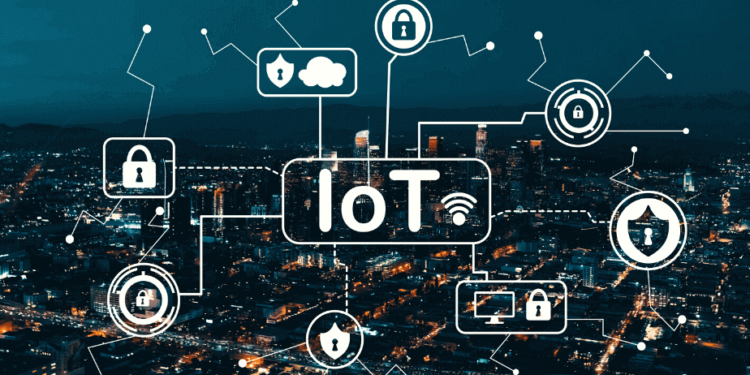IoT technology is present in all sorts of devices, from a light bulb that turns off using an app to an autonomous car. These devices connect to the internet and communicate with each other and with you. They create vast data, from a simple temperature reading to a continuous stream of video footage.
Smart Homes
Use a smartphone app to monitor and control appliances like your home’s smart thermostat or bright lights. The data that these devices collect helps you save money, energy, and water. And they may even help you change your habits. IoT connectivity has helped companies with workflow automation, cost reductions, and paperless operations in business. It could also boost productivity by reducing employee commute times and travel costs. IoT technology is changing the way we live, work, and play.
For example, wireless sensors in a coffee shop might detect you approaching and alert the barista that you’re about to order your usual, enabling a quicker transaction. IoT devices are connecting everything, merging the digital and physical worlds. And as they connect, these devices send and receive massive amounts of data – sometimes at high speed. To do this, they need a connectivity solution that offers the right balance of range, power consumption, and price.
Smart Cities
IoT connectivity allows our devices to talk to each other and take actions based on data. Whether it is automated temperature control by smart thermostats, a smart refrigerator that orders groceries, or lighting devices that respond to voice commands, IoT makes our lives easier and more comfortable. Businesses also benefit from IoT connectivity. IoT enables business owners to see the bigger picture and make informed decisions, from monitoring equipment to tracking inventory.
For example, an IoT device installed in a city could alert citizens to a local event by sending an email or text message. This helps minimize traffic and saves time – something we all appreciate. In the future, smart cities will enable us to live more sustainably. They will use IoT sensors to monitor everything from the city’s water usage to its road infrastructure. This data will help reduce traffic, lower pollution levels, and increase the transportation system’s efficiency. Smart cities will also improve the city’s energy management systems, helping them become more environmentally friendly and financially sound.
Smart Transportation
With the advent of cheap and powerful computer chips, ordinary physical devices can be given digital intelligence to communicate real-time data. The result is an increasingly more imaginative world in which the digital and physical universes merge. Take, for example, streetlights in a busy city intersection. Typically, they are triggered by timers or pressure plates underneath the road, but intelligent technology allows them to detect traffic and cycle through lights accordingly.
This makes commuting more efficient and less dangerous by eliminating the human factor that can lead to traffic accidents. Smart transportation also offers more reliability and efficiency for public transport, such as buses and trains. Intelligent sensors can monitor snow and ice on the road, allowing plow drivers to prioritize routes to keep transit running smoothly. This is in addition to data collection that enables transportation authorities to manage their systems and track maintenance needs better.
Smart Healthcare
In healthcare, innovative technology is transforming the industry with telehealth and remote care that connect patients and doctors like never before. The intelligent tech that powers these devices gathers and analyzes real-time data, allowing doctors to spot problems and make more accurate diagnoses. IoT-powered systems can also help reduce costs by monitoring energy usage and automating processes. Sensors in office buildings, for example, can detect whether a room is occupied and adjust the temperature accordingly.
This saves money and reduces carbon footprint. IoT sensors can also track business performance and generate new revenue streams. Companies can use sensors to identify problems with equipment and swap them out before they cause severe damage or stop production entirely. The sensors can then transmit that data to cloud-based analytics services. Which provide insights into the company’s operations and how they can be improved. As the number of IoT devices continues to grow exponentially, connectivity solutions are evolving to meet the needs of each use case.
Smart Agriculture
Across industries, the Internet of Things brings a host of new possibilities that improve how we work. Increasing business productivity is one of its most significant benefits. IoT technology makes it possible to analyze massive amounts of business data in real time and use that information to make better decisions. This is a significant benefit for both customers and businesses. For example, IoT devices like store scanners allow the system to automatically send sales and inventory information back to the cloud as goods are added or removed from shelves.
This saves time and effort for both the customer and the salesperson. The IoT also improves the overall quality of products and services. This is accomplished by better monitoring the quality and quantity of crops, livestock, and field environments. For example, if an outbreak of a disease occurs, the source can be quickly traced. This helps reduce costs and risks and provides a more satisfying consumer experience. IoT sensors help optimize crop growth by monitoring light, temperature, and humidity. IoT-enabled drones can collect a considerable amount of field data in the blink of an eye, simplifying supervision tasks for farmers.
Read more interesting articles on Ebeak


















